Do you remember the CD age of video games?
I don’t think I have to explain what a compact disc is, as they’re still sort of a ubiquitous concept, and I still see them on store shelves. I was born well after the vinyl age and still had a clear idea of what those were. They would always catch my eye somewhere in a corner of my parents’ things, as I’m sure CDs do for children of Gen X and Millennial parents. Additionally, CDs look virtually identical to DVDs and Blu-Ray discs, so the disparity between generations of optical discs is somewhat less than it was to go from vinyl to 8-track to cassette to CD.
But let’s nix most of the ersatz technophilic rambling and instead cut to the part about video games on CDs. They were the predominant format for PC games for at least ten years, but the story with CDs on consoles is much more brief. I personally think of the 5th generation as the “CD generation,” but this entire idea is merely a testament to the power of the Sony PlayStation, the biggest console of its time. It is, in fact, the one truly successful home console to have used the compact disc as its media format, with only the Sega Saturn even remotely rising above the waterline beyond that.
This is mainly in regard to worldwide sales. CD-based consoles were more relatively successful in select parts of the world, especially Japan, which is where most of the major ones were developed. One of these was the CD-ROM² add-on for the PC Engine, which is how Japan would experience the initial release of Tokimeki Memorial in 1994—almost entirely voice-acted. This was made possible by the greater storage capacity allowed by CDs; voice acting was occasionally featured in a limited capacity in cartridge-based games before then, and could be done reasonably well on other 5th-generation consoles thanks to audio compression (like with Star Fox 64), but in general players just couldn’t take it for granted like they do now.
Tokimeki Memorial was later ported to the PlayStation in 1995. The PlayStation quickly became known for its multiple-disc games—something PC players were no stranger to even dating back to floppy disks—which became its own phenomenon where players would assume this meant they were getting more content. In reality, it was that the audio and cinematic files simply took up that much space. Players were quick to point out that the third disc of Final Fantasy VII pretty much only covered the very last segment of the game, with the ending cinematics being the main reason for its existence at all.
Now, if your brain works like mine (which I hope for your sake it doesn’t), you may have at one point assumed that movie files would take up more space than audio files. Pound-for-pound that might be true—don’t quote me on any of this—because cinematics tend to feature both audio and video, but if you think about it, a game’s voice acting will run for much longer than its cinematics if you lay them each out end-to-end. Hopefully this illustrates why even partial voice acting was so rare, even for early CD-based games. The amount of voice acting you hear in any given game is also probably several times larger than it appears, given that lines must be recorded for each possible contingency a single player may never hear.
When Konami released Tokimeki Memorial 2 on November 25, 1999 for the PlayStation, more than five years had elapsed since the first game’s PC Engine release, and it was even four years removed from the PlayStation port. Japan was set to release the PlayStation 2 in only three months. It was nowhere near the last game to be released for the original PlayStation, but it’s safe to say it came out well into the latter half of the console’s life cycle. This is typically the time when developers would get somewhat wild with console capabilities, as they’d become more familiar with its architecture and what they could get away with. This is when you’d start seeing things like add-ons and other plug-in features. For Tokimeki Memorial 2, all Konami really needed was the plain old memory card.
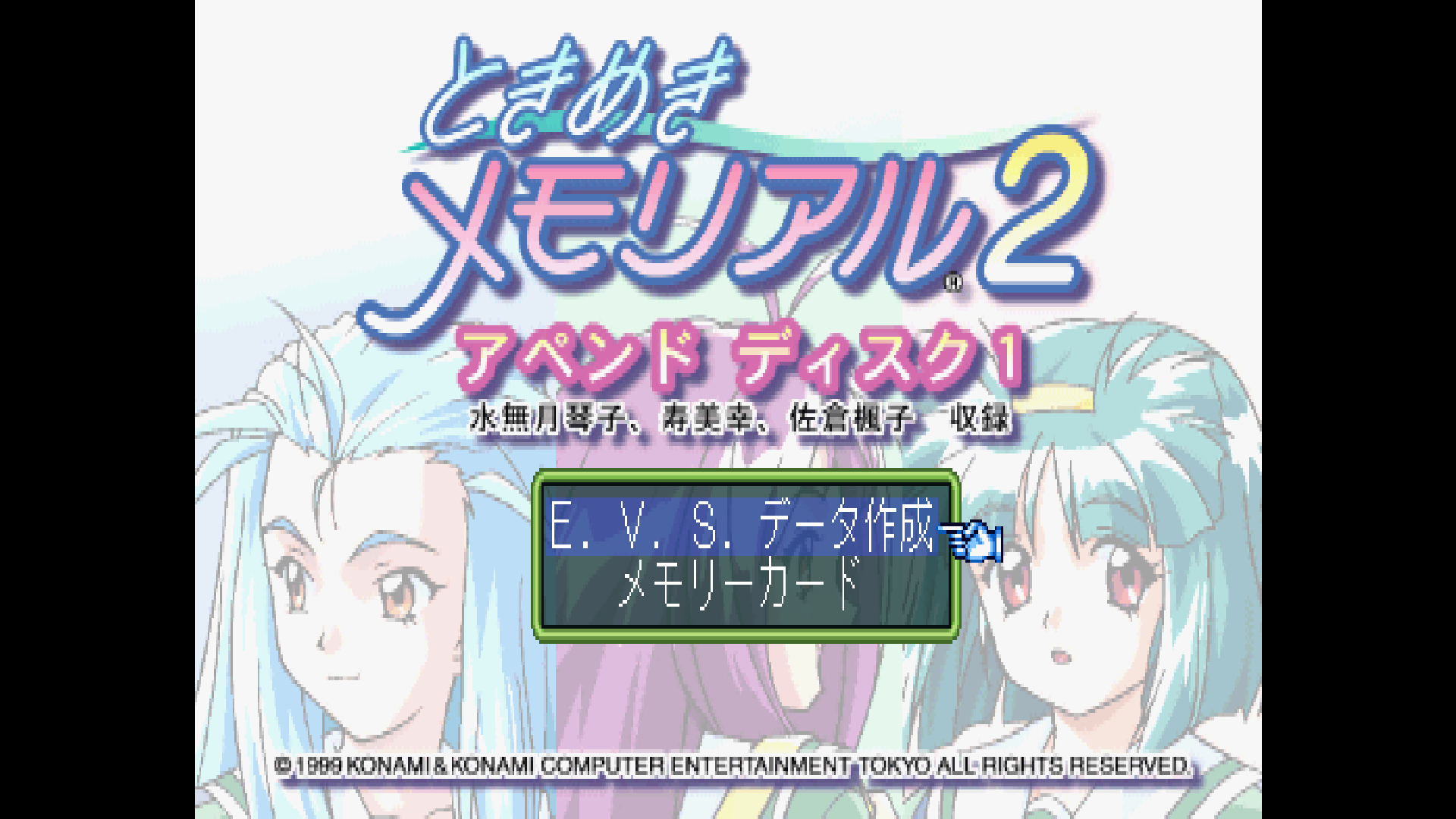
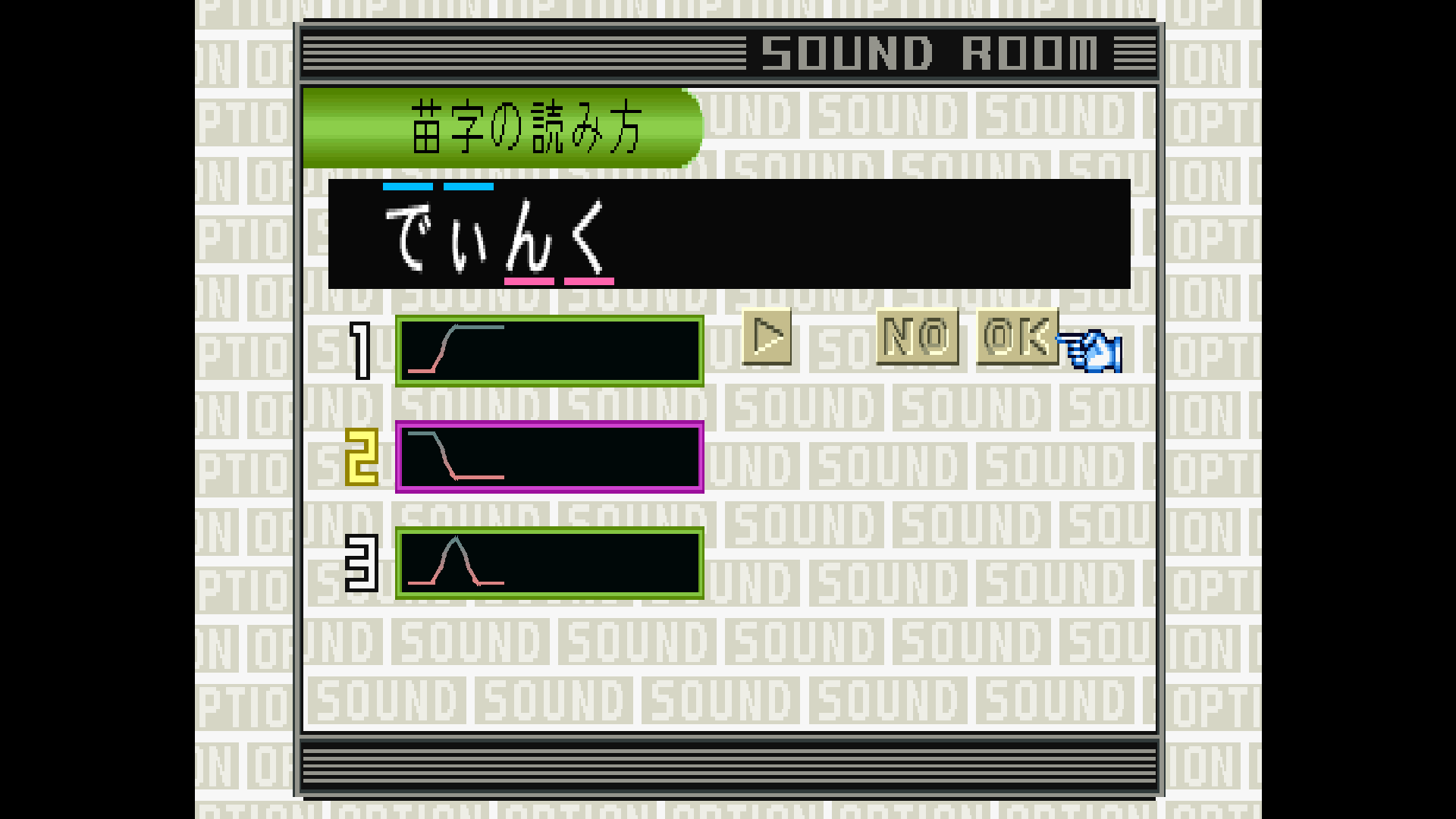
What you see here is Tokimeki Memorial 2‘s EVS, which stands for “Emotional Voice System.” It allows you to choose a girl, enter your name, and specify pitch accent to create sound files you can load along with a new save file so that one girl can then speak your name during the game—rather than the girls simply skipping over your name and honorific as they did in the first game. You may have noticed that this is just the first EVS disc, which allows you to create files for only three of the game’s girls, with two girls being included with the main game files by default. These EVS discs had to be obtained via supplemental issues of Hibikino Watcher, which were real-life magazines that also served as the in-game version of the Memorial Spot feature from the first game. Konami even announced the creation of a “VR space” whose URL would be shown in the game, where users were expected to roleplay when using its forums:

Players had to have the first three physical volumes of Hibikino Watcher to get each EVS disc, and the base game itself was five discs. That matches Riven: The Sequel to Myst for most discs on the console even without the EVS discs. With them, it doubles that of either Final Fantasy VIII or IX. When you use the EVS, it requires 11 memory blocks for a single girl. Then, you have to load the data every time you boot up the game, though this is not mandatory. Once you get into the game, you expect to find the familiar high school setting, but are instead dropped into an idyllic childhood during spring holiday one year. As Japanese schooling doesn’t involve a long break between school years like summer vacation in the United States, this suffices for that period of time when a child would most feel disconnected from that grind.
「懐かしいなぁ…」

This open-world childhood simulation lets the player build their own personality by interacting with various memory nodes. This isn’t explicitly defined, but its purpose is obvious. If you interact with a dog, you can decide whether your character thinks dogs seem threatening or benign. An adult might prompt you to explain the degree to which you prefer school or vacation. Any transparent manipulation on the game’s part was excusable in my eyes because I felt a certain nostalgia despite never having played the game. Its distinctly PlayStation aesthetics charmed me, even as I knew in my heart that this game did not possess the same level of artistic craft as the first Tokimeki Memorial.
I spent a long time combing through the credits for both games and trying to see how much of its staff carried over to the second game. Koji Igarashi had left to build his Castlevania legacy, that much I knew. But I couldn’t find many other key names, either. Akira Otsuka had replaced Masashi Kokura as art director. It says Konami on the jewel case, but it was actually developed by a subsidiary, KCET (Konami Computer Entertainment Tokyo). I was disappointed, but chose not to write it off.
As you lead your friend Hikari Hinomoto (“the sun’s glow,” more or less) around town, you can encounter more involved events that usually have an emotional charge to them. Your character tends to act distinctly boyish. This often results in Hikari on the verge of tears. You manage to derive compassion from the collective unconscious, possibly for the first time in your life.
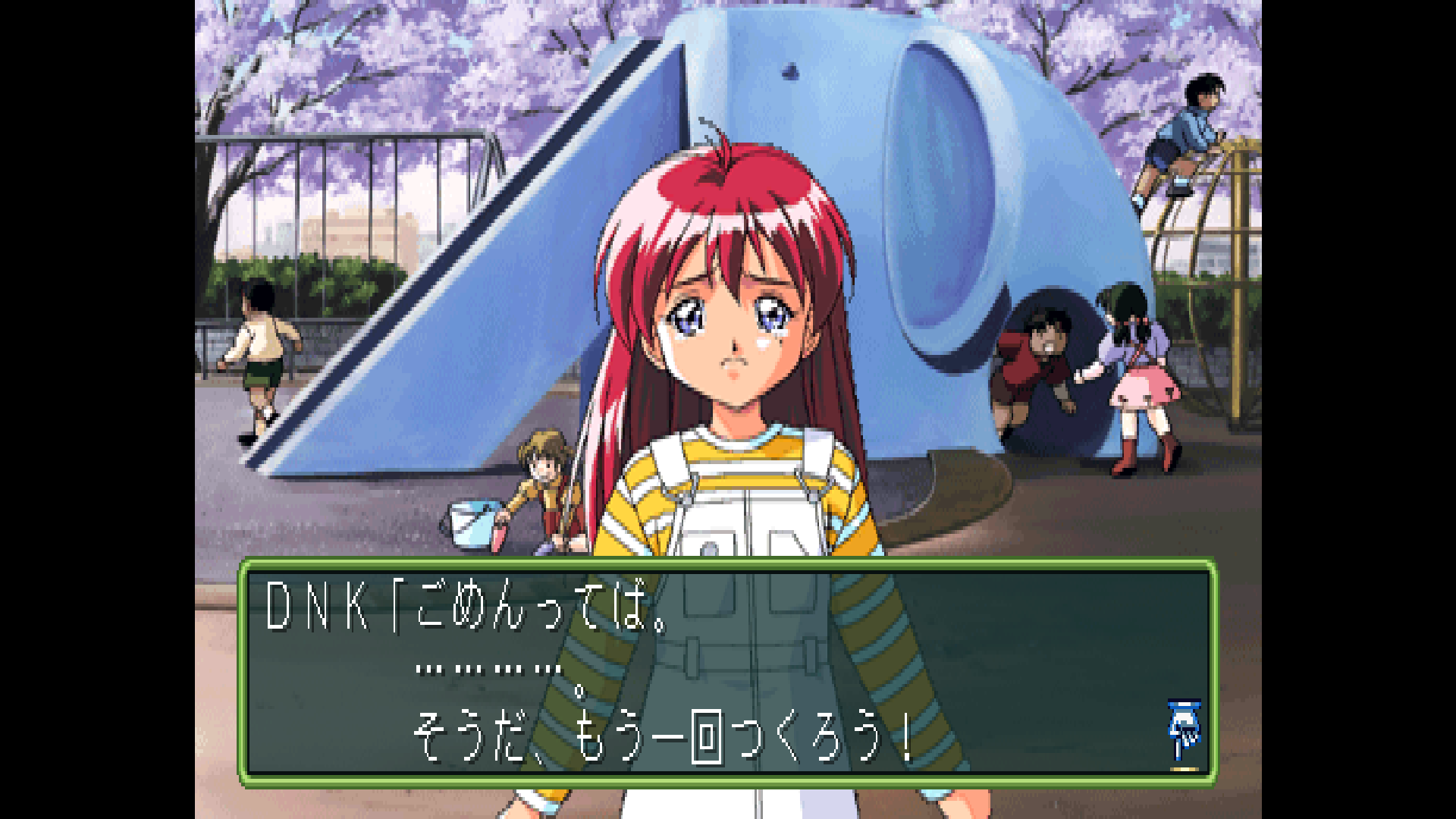
Some keystone events happen no matter what. You revel in the comfort of being led by the hand once in a while, far from the paralyzing responsibilities of your real-world adult life. I chose to ride the merry-go-round, accompanied by “Waltz of the Flowers” from The Nutcracker, my favorite ballet.
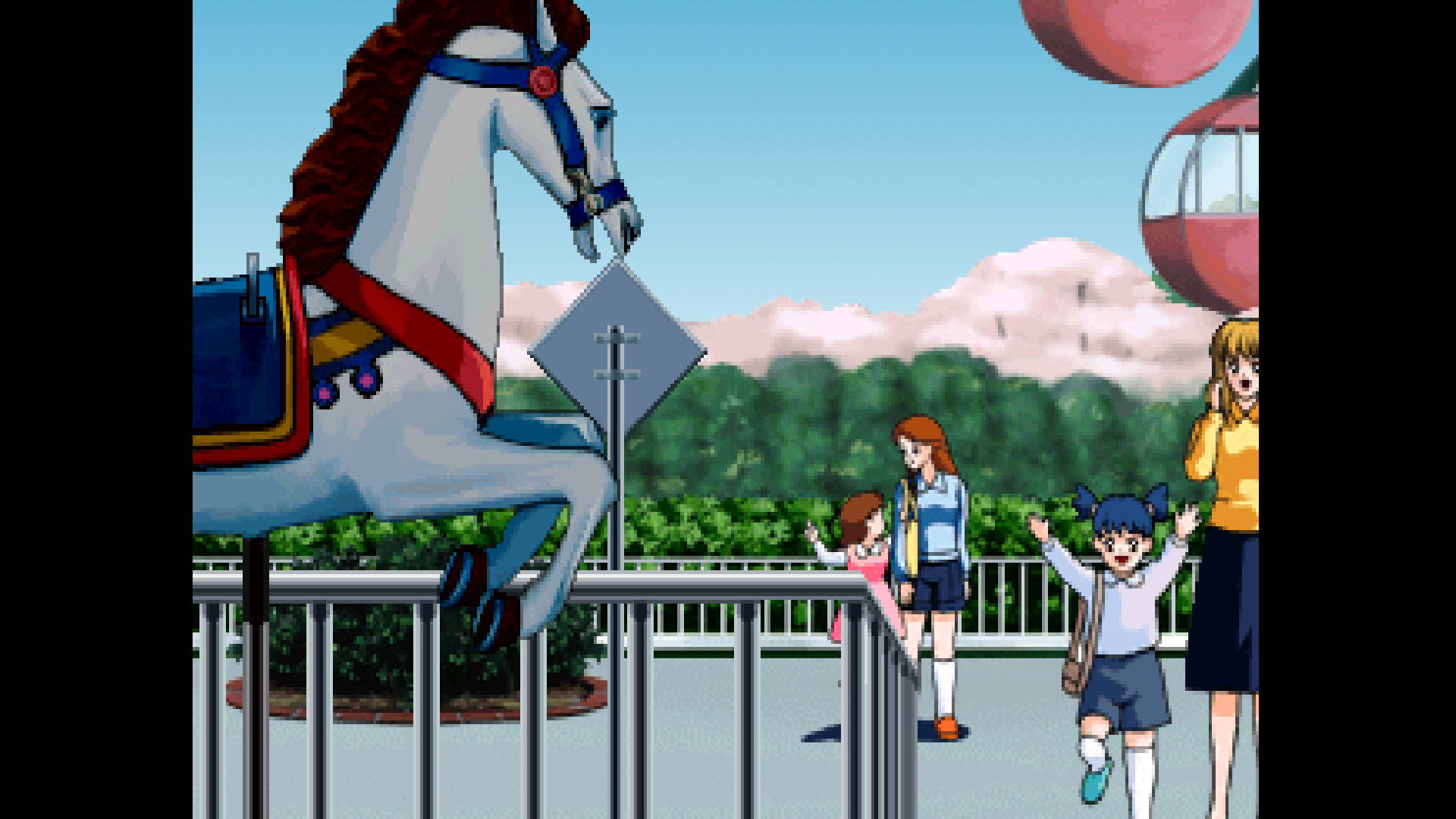
Soon, you arrive at the catch: you’re moving away. You and Hikari grieve. I recalled my own misgivings with a childhood that lacked permanence.
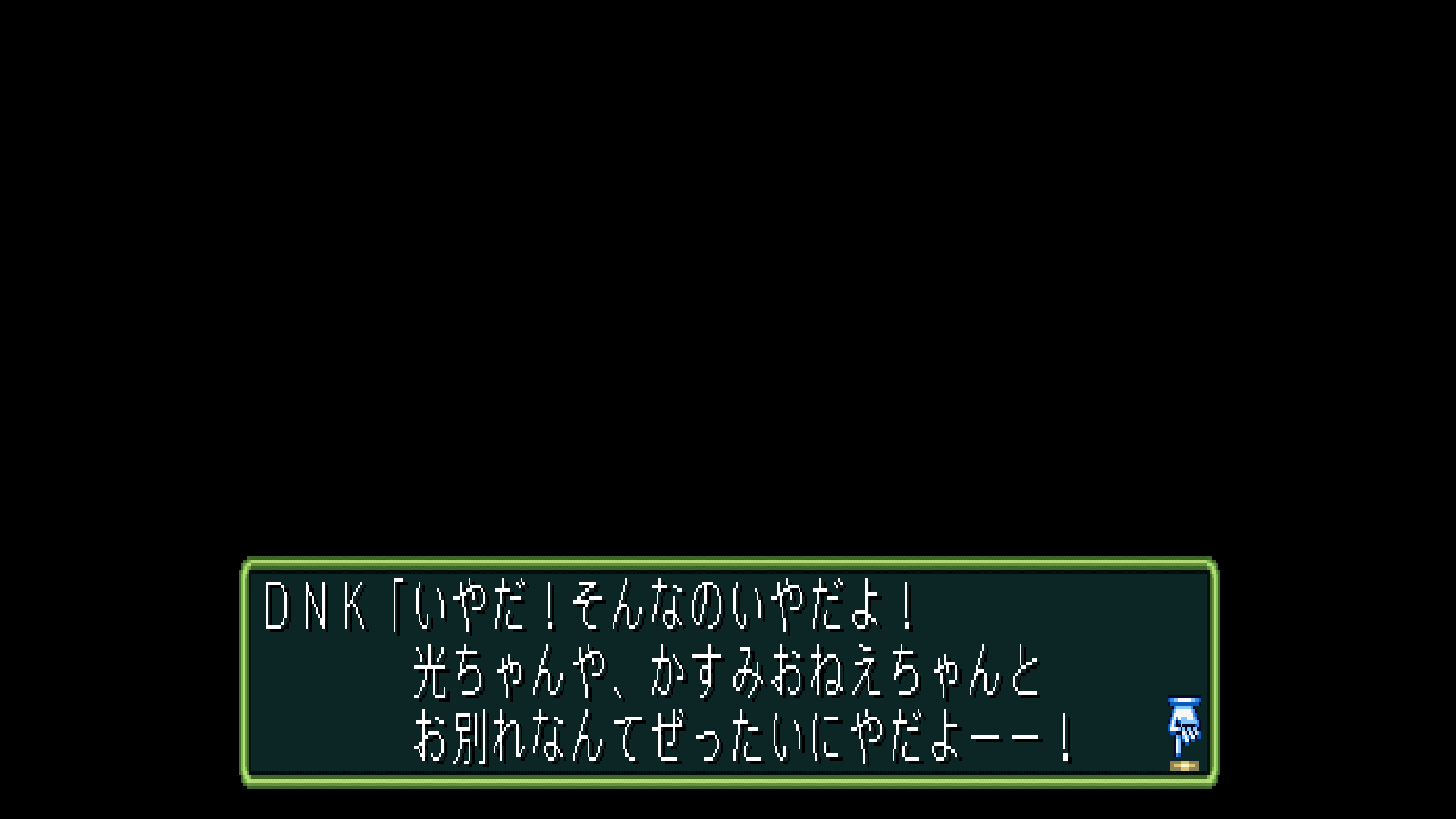
Seven years and one disc pass, and you arrive at the more familiar starting point of Tokimeki Memorial, where you have a chance meeting with Hikari just before the opening ceremonies. She quickly chides you for making her sad when you moved away, but forgives you because you remembered her at all.

Later, you resume catching up. She remarks that you haven’t changed, while telling you that she isn’t a crybaby anymore. You concur that she used to cry a lot when you were little. She replies:
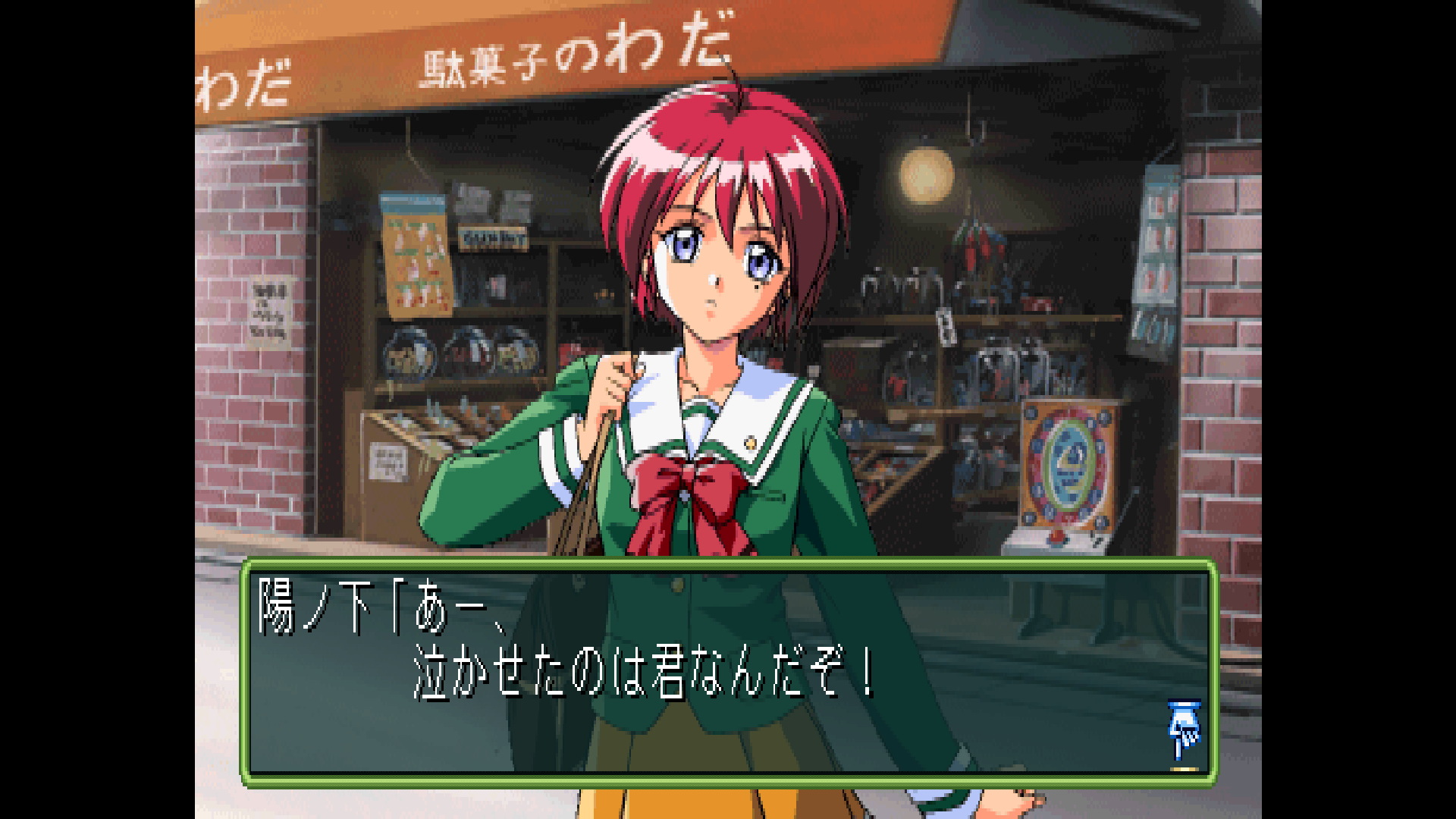
“Yeah, I was crying because of you.”
I recalled the scene that I had witnessed just five minutes ago, seven years prior in the life of my character. Hikari, crying her eyes out as my parents drove me away to what might as well have been Shangdu. I felt guilty, even though it wasn’t my fault, nor my character’s. I felt—unlike with the first game, where its main character has spent his whole life in proximity to Shiori Fujisaki—that I had to right some wrong with this game. That’s where the game differentiates itself from its predecessor, and that’s where I was hooked.
The next stages play out more or less how you’d expect from a gameplay perspective. Despite my personal takeaways regarding the game’s introduction, the reality is that the game defocuses the 幼なじみ character somewhat after you put in the second disc. Unlike Shiori, Hikari does not markedly position herself directly in your path, has a set birthday (June 25) and blood type (A), and joins her own canonical club (track and field). This makes her feel more like one of the pack rather than being directly connected to the player, despite the Hikari-focused childhood stage of the game.
The girls are not as temperamental from a systemic point of view, and bombs are not as ubiquitous or dangerous. There is more of a focus on which girls are best friends with which other girls, which was present in the first game’s lore, but only implied within the game. Girls that enter into Tokimeki Memorial 2 don’t command your attention as readily, making single-minded pursuance of your target girl much easier, generally. This makes the game feel more relaxed at the expense of some of its challenge, though the more flamboyant, uncategorizable nature of the girls can make their preferences and best responses tough to pin down. How will you appease the student body president who rules with an iron fist?

One addition I really like is the weather system. Like in real life, you can only predict the upcoming weather reliably about a week out. You can schedule dates within the upcoming week, but in my experience girls will say they’re busy more often in Tokimeki Memorial 2 if you don’t give them as much notice, which may or may not be true. Inclement weather can affect date options and add cosmetic differences while not typically outright ruining your plans. The game also features a number of extra free date opportunities like a fireworks show, some of which thrust more than one dialogue option your way, making them sort of win-big-or-go-home opportunities (you can choose to go alone).
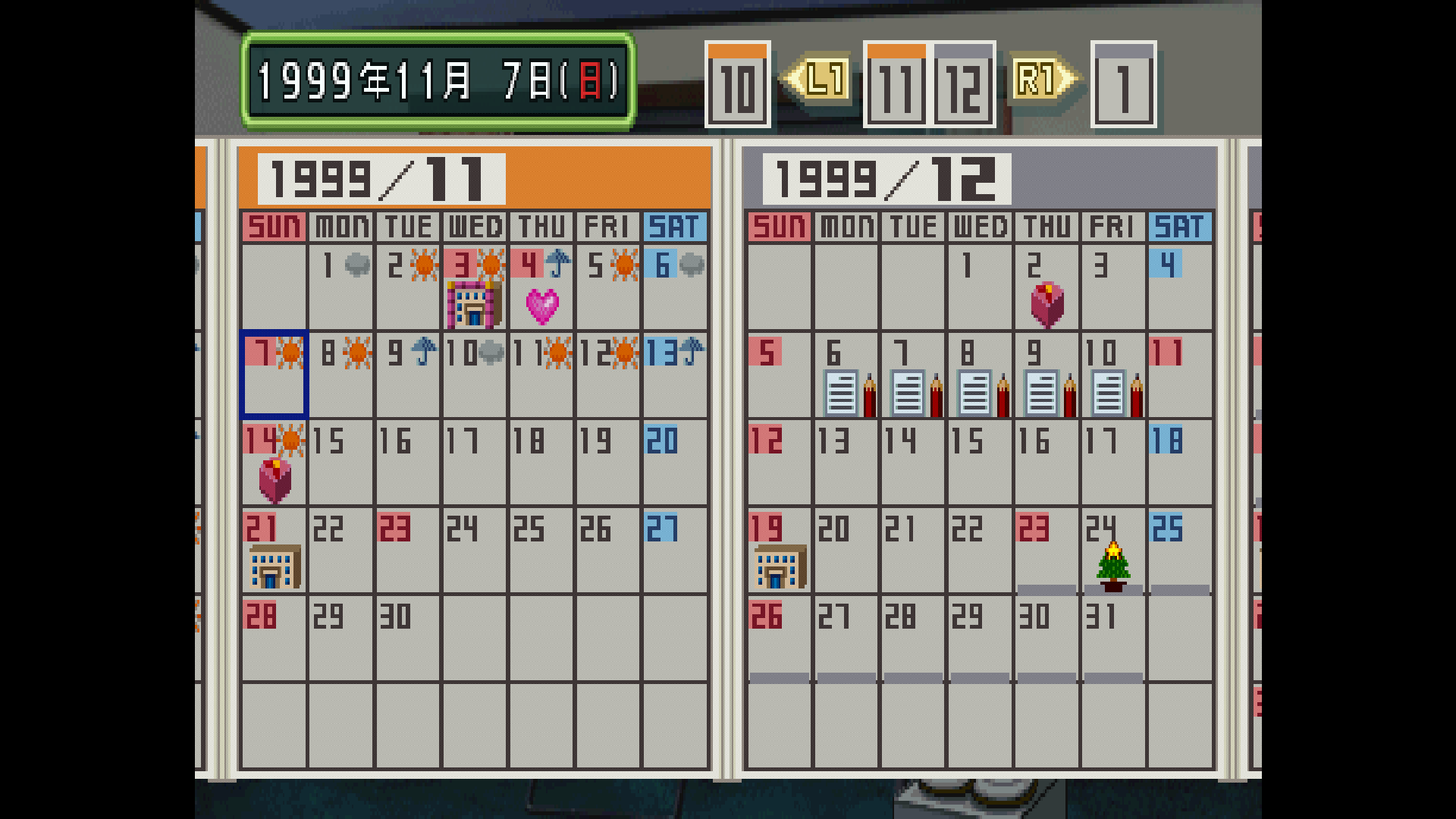
I don’t want to get too in-depth with mid-to-late-game events because Tokimeki Memorial 2 remains somewhat pure in English-speaking circles, and there’s something sort of beautiful about that. I believe that the first Tokimeki Memorial will one day be playable in English, but I’m fairly confident this won’t ever be true of Tokimeki Memorial 2; it’s just so monolithically untouchable with its 5+3 discs, defunct “VR space,” untranslatable EVS system, and quirks that I didn’t touch on like a greater emphasis on honorifics. When you see a particular girl, you can choose to call out to her with any number of formal or informal Japanese name suffixes (or none at all), and choosing incorrectly can be very jarringly uncomfortable. Your character will default to whatever he knows to be that girl’s baseline if you simply bypass it, making it not strictly necessary, but it’s a feature that would be a shame to be omitted.
It’s worth noting that while it was still a hit in Japan, Tokimeki Memorial 2 did not sell as well as the first game, and did not appear on Famitsu‘s 2006 list of readers’ top 100 games of all time (the first game appeared three times). I believe players knew there was something inferior about the whole package, with its more run-of-the-mill art style, emphasis on stock music, and lack of finishing touches that made Tokimeki Memorial special, rather than just being the same kind of anime dating sim it would continue to inspire throughout the years. Regardless, Tokimeki Memorial 2 is a stunningly bizarre, endlessly interesting fragment of an era of games that will one day be referred to as its “nascent” stages. Hopefully this primer can suffice as basis for archeological study on what may always remain a black box to many.

I just finished this for the second time today. There’s a bit of a dearth of discussion around this game, so I’ll just pop my thoughts here.
I played the original three times, and enjoyed it thoroughly. I found it interesting that the optimal stat-building method of the original, so as not to overwhelm yourself with too many girls too soon, had the opposite effect here. Diplomatic stat increases and fear of vengeful girls bombing the heck out of you left me with a lot of ambivalence and the bad ending. I knew I hadn’t dug at the roots of the game properly, so I had a think and went again.
I decided I liked Kaedeko, and the narrative swerve in the middle of the game was a gut punch. I genuinely felt conflicted about whether to stick with her, or twist with someone else. The moments where she reappeared were genuinely affecting, and by the end I was welling up like she was.
I did prefer the art style and design of the characters in the original, as you did. But I enjoyed the more laid back attitude to this game.
LikeLike